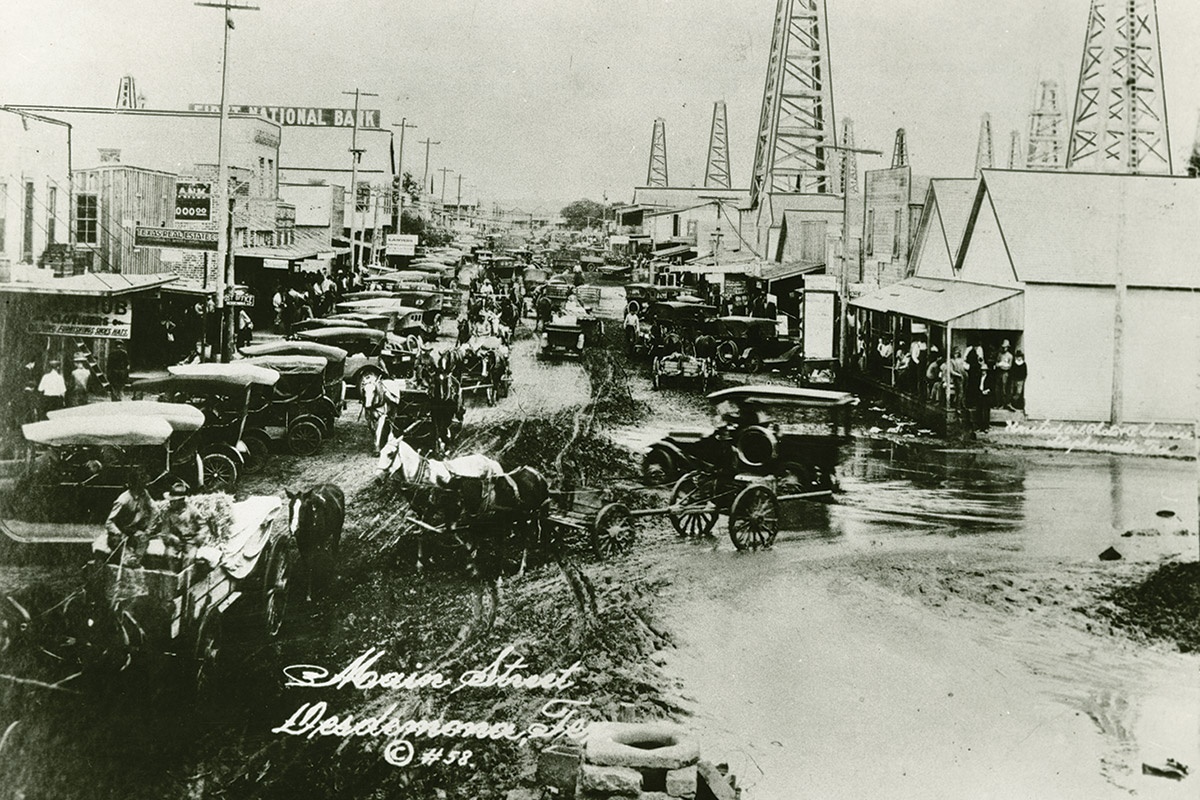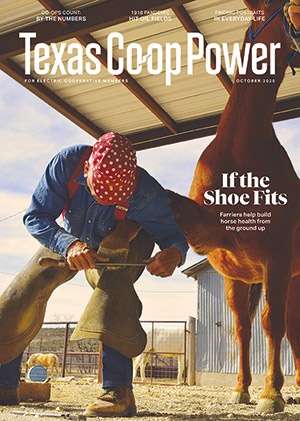The COVID-19 pandemic has drawn comparisons to the influenza outbreak of 1918, what became known as the Spanish flu, which was the 20th century’s deadliest pandemic. The Spanish flu infected about 500 million people, or one-third of the world’s population, according to Centers for Disease Control and Prevention estimates. Tens of millions died worldwide, including approximately 675,000 Americans.
Of the 5,000 Texans killed in World War I, a third are believed to have died from influenza. While the battlefield, with soldiers crowded in makeshift ramparts, provided a natural incubator for the virus, social conditions during Texas’ early 20th-century oil boom also allowed the disease to spread unchecked. The lack of suitable housing and access to fresh water, and poor sanitation in towns besieged by thousands of boomers—as Ranger, Burkburnett and Desdemona were in 1918—created an environment in which infection flourished.
Researcher Ben Wright found evidence of the boomtown epidemic in the Oral History of the Texas Oil Industry, an archive of recordings held by the Dolph Briscoe Center for American History at the University of Texas at Austin. “Part of my job is to work out ways the center’s collections inform current issues,” said Wright. “The past is never lacking in its warnings, lessons and reassurances.”
The interviews and other materials in the archive were gathered in the 1950s and include direct testimony about the 1918 flu pandemic.
Interviewee Walter Cline, who later became mayor of Burkburnett, served as field director for the Red Cross at Call Field near Wichita Falls when the flu hit. Cline headed into the Burkburnett oil field with doctors and nurses as well as food, clothing, medicine and other donated resources. His team found people “suffering from flu and exposed in covered wagons and under these tarpaulins,” he said. “In one place, you’d find a mother dead, with a little 6- or 8-months-old baby crawling around over her breast, trying to open her dress. … I think on our first trip west of Burkburnett, we gathered up some six or eight dead men, women and children, and they continued to die until we found temporary shelter for them.”
Fred Jennings, a rig manager at Goose Creek Oil Field near Baytown, recalled, “The people died, and they just died so fast here till they didn’t have no undertakers. You’d just have to put them in pickup trucks and haul them to Houston. Just put them in a pine box and bury them any way you could. … I saw one man working and walk home and was dead in 30 minutes.”
Don Carleton, Briscoe Center executive director, says we don’t know the full impact of the 1918 pandemic, but the disease reached Texas’ highest office. Researching his forthcoming biography of Gov. William P. Hobby, Carleton learned that Hobby fought the deadly contagion just as desperately as the roughnecks of the oil fields.
“I was quite surprised to learn that even our state’s governor was afflicted with the disease,” Carleton said.
When Austin writer Gene Fowler’s mother was born, just a few years after the flu pandemic, her family was living in a tent in the Mexia oil fields.


